Outer Space & Universe
Outer Space & Universe
Space, also known as outer space, is the near-vacuum between celestial bodies. It is where everything (all of the planets, stars, galaxies and other objects) is found.
On Earth, space begins at the Kármán line (100 km above sea level). This is where Earth's atmosphere is said to stop and outer space begins. This is not a firm boundary but is a convention used by scientists and diplomats.
Items in space are free to move back and forth; up and down; and left and right. These three dimensions are what make 3D space. Items also move forward through time, which is sometimes called the fourth dimension.
The majority of space contains very little matter and so most of it is a vacuum. Scientists do not know how big space is but we do know that space is extremely big, and is always expanding.
According to the big bang theory, all matter and energy in the Universe was compressed into a very small space. Then it exploded and started expanding. Space is still growing in size today; this means the distance from one galaxy to distant galaxies is getting longer.
Gravity is the force that keeps the Moon in orbit around the Earth and the planets in orbit around the Sun. Gravity can stretch and bend space similar to how a heavy ball placed on a stretched sheet of rubber will cause the rubber to stretch. The scientist who discovered that space can bend is named Albert Einstein. How gravity bends space is part of his theory of general relativity.
Astronauts, Cosmonauts, Taikonauts and Spationauts
An astronaut is any person who is trained by NASA to travel and perform tasks in space. Although the space traveler may not necessarily be a United States citizen, each astronaut does go through a rigorous training regiment by the National Aeronautics and Space Administration. Other space travelers go by other names then astronaut depending on their country of origin.
In the United States, astronaut is derived from the Greek words ástron (star) and nautis (sailor). While, in Russia, a space traveler goes by the name космонавт (English: cosmonaut), which is derived from the Greek words kosmos (universe) and nautis (sailor). Westerners call a space traveler from China a taikonaut, based on the 1998 writings of Chiew Lee Yik and Chen Lan where the term tàikōng (great emptiness), Chinese for “space”. In China, the term yuháng yuán (universe navigator) is used for space traveler.
Only the United States of America (United States), Russia (earlier, the Union of Soviet Socialist Republics), and the People’s Republic of China (China) have sent manned spacecraft into space. Other countries have assisted these countries by sending their own space travelers on space missions. For instance, a French space traveler is called a spationaut (from the French word spationaute), which is derived from the Latin spatium (space) and Greek nautis (sailor). (plural in Greek nautes = sailors)
-
01:01
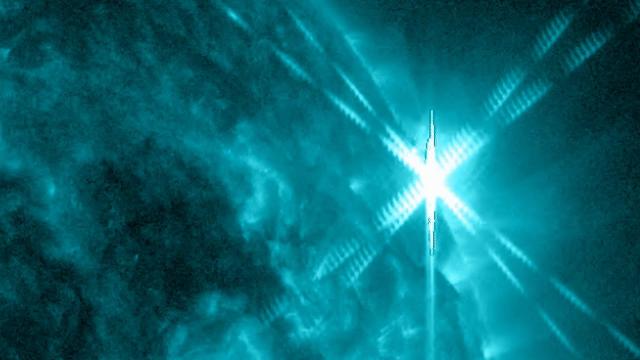
Sun blasts powerful X2.2-class flare! See NASA Solar Dynamics Observatory views
Added 41 Views / 0 LikesThe Sun unleashed an X2-class solar flare on Feb. 23, 2025. NASA's Solar Dynamics Observatory captured the fireworks in multiple wavelengths. Footage courtesy: NASA / SDO and the AIA, EVE, and HMI science teams, helioviewer.org | edited by Space.com's [St
-
01:07

Sun blasts powerful X3.3-class solar flare - See stunning spacecraft views
Added 86 Views / 0 LikesSunspot AR3869 erupted with an X3.3-class solar flare on Oct. 24, 2024. NASA's Solar Dynamics Observatory captured the fireworks. Footage courtesy: NASA / SDO and the AIA, EVE, and HMI science teams, helioviewer.org | edited by Space.com's [Steve Spaleta]
-
01:03
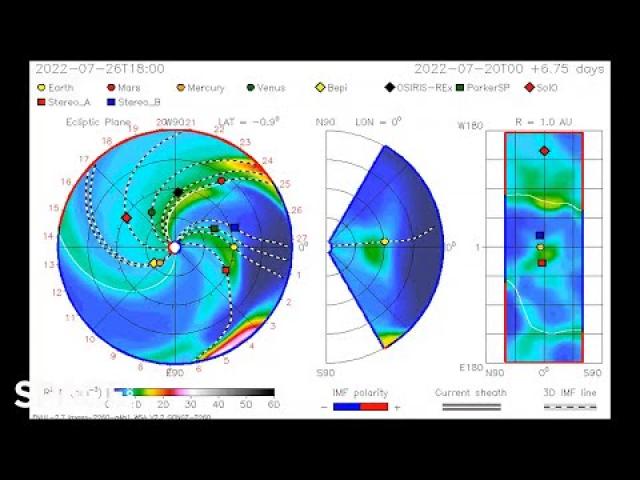
Sun blasts solar storm in Earth's direction
Added 182 Views / 0 LikesA c-class solar flare blasted a coronal mass ejection in Earth direction on July 21, 2022. NOAA predicts that G1- to G2-class geomagnetic storms could hit Earth. Credit: NASA/ESA/SDO/SOHO/NOAA | mash mix: Space.com
-
01:00
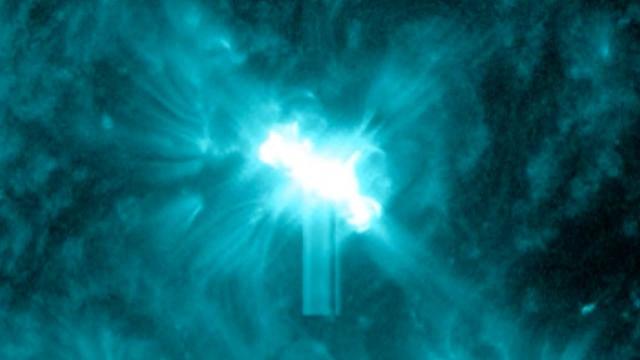
Sun blasts strong M-class flare! Spacecraft captures fireworks
Added 64 Views / 0 LikesSunspot AR4046 blasted a M5.6-class solar flare on April 1, 2025. NASA's Solar Dynamics Observatory captured the fireworks. Footage courtesy: NASA / SDO and the AIA, EVE, and HMI science teams, helioviewer.org
-
01:16
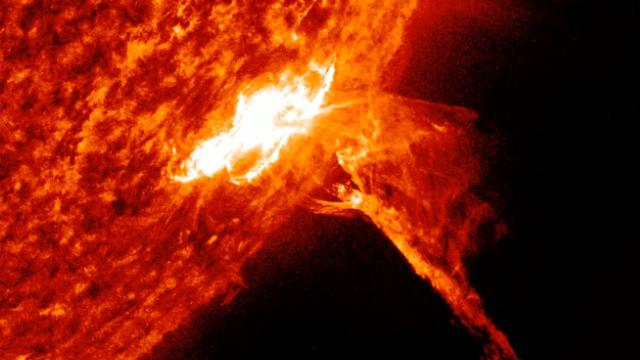
Sun blasts strong M4-class flare and spits fire! See spacecraft views
Added 154 Views / 0 LikesSunspot AR3575 blasted an M4-class solar flare on Feb. 6, 2024. NASA's Solar Dynamics Observatory captured the fireworks in multiple wavelengths. Credit: Space.com | NASA/SDO and the AIA, EVE, and HMI science teams | edited by [Steve Spaleta](https://twit
-
01:17
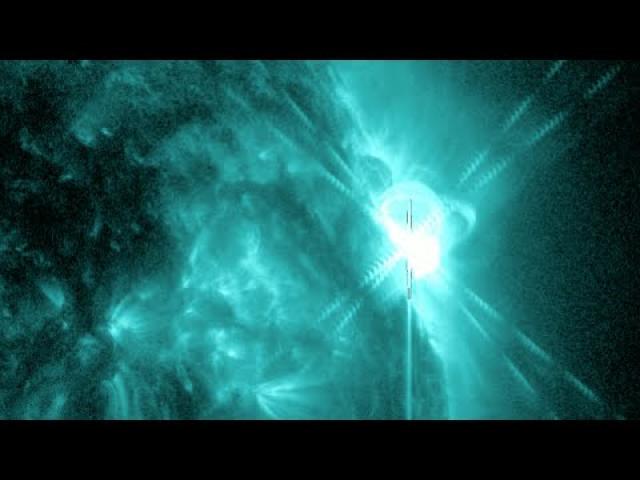
Sun blasts strong M7.9 solar flare, NASA spacecraft sees it
Added 190 Views / 0 LikesNASA Solar Dynamics Observatory captured a M7.9-class solar flare on Sept. 16, 2022. See footage of the blast in multiple wavelengths. Credit: Space.com | footage courtesy: NASA/SDO/helioviewer.org | edited by Steve Spaleta (https://twitter.com/stevespale
-
01:07
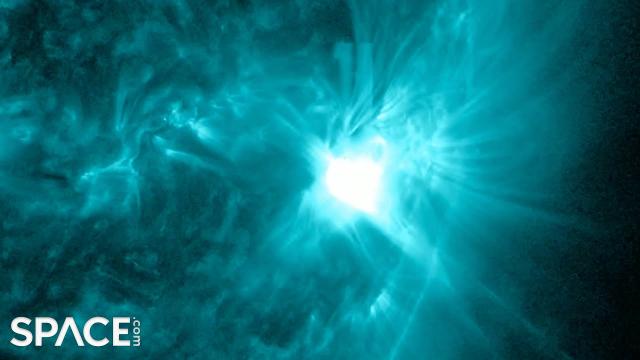
Sun blasts X1-class solar flare on Holy Thursday - See spacecraft views
Added 132 Views / 0 LikesSunspot AR3615 erupted with an X1-class solar flare on Thursday March 28, 2024. NASA's Solary Dynamics Observatory captured the blast in multiple wavelengths. Credit: Credit: Space.com | footage courtesy: NASA / SDO and the AIA, EVE, and HMI science teams
-
01:13
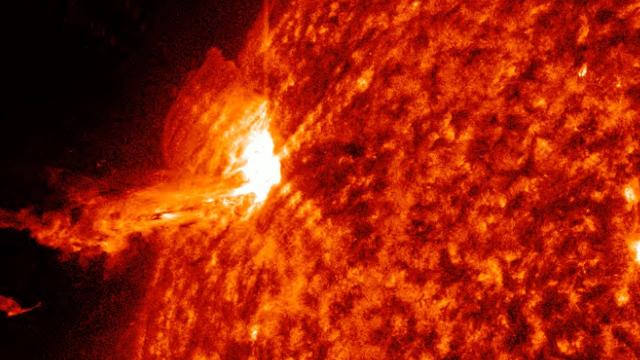
Sun blasts X1-class solar flare! See spacecraft footage in 4K
Added 195 Views / 0 LikesSunspot AR3186 erupted with an X1-class solar flare on Jan. 10, 2022. NASA's Solar Dynamics Observatory captured the fireworks in multiple wavelengths. Credit: NASA/SDO/helioviewer.org | edited by Space.com's Steve Spaleta (https://twitter.com/stevespalet
-
01:01
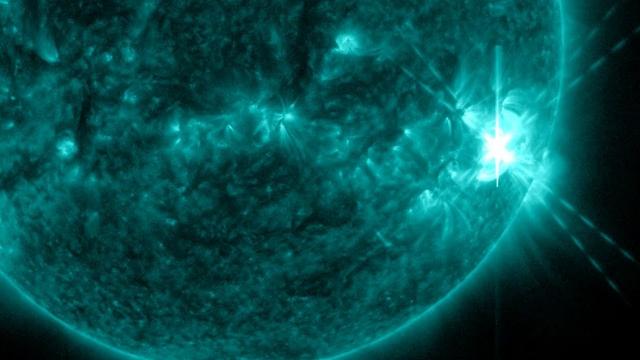
Sun blasts X1.2-class solar flare - See it in multiple wavelengths
Added 188 Views / 0 LikesThe sun erupted with an X1.2-class solar flare on March 29, 2023 (UTC time). NASA's Solar Dynamics Observatory captured the fireworks in multiple wavelengths. Credit: Space.com | footage courtesy: NASA/SDO | edited by [Steve Spaleta](https://twitter.com/s
-
01:00
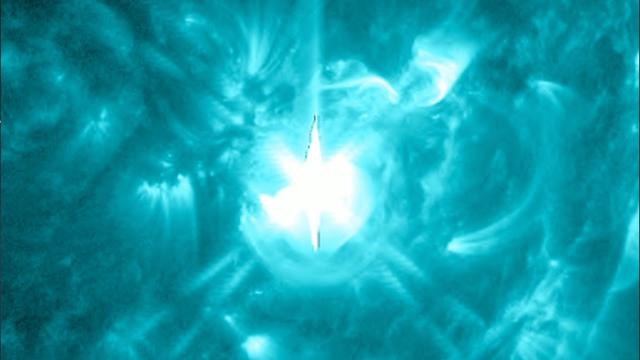
Sun blasts X1.2-class solar flare! See spacecraft views
Added 110 Views / 0 LikesSunspot AR3738 blasted an X1.2-class solar flare on July 14, 2024. See views of the eruption from NASA's Solar Dynamics Observatory. Footage courtesy: NASA / SDO and the AIA, EVE, and HMI science teams, helioviewer.org
-
01:07
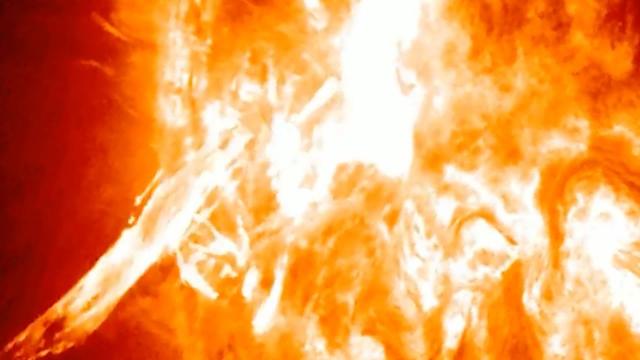
Sun blasts X1.8-class solar flare! See NASA spacecraft views
Added 87 Views / 0 LikesASunspot AR3873 erupted with an X1.8-class solar flare on Oct. 24, 2024. NASA's Solar Dynamics Observatory captured the fireworks. Footage courtesy: NASA / SDO and the AIA, EVE, and HMI science teams, helioviewer.org | edited by Space.com's [Steve Spaleta
-
05:51
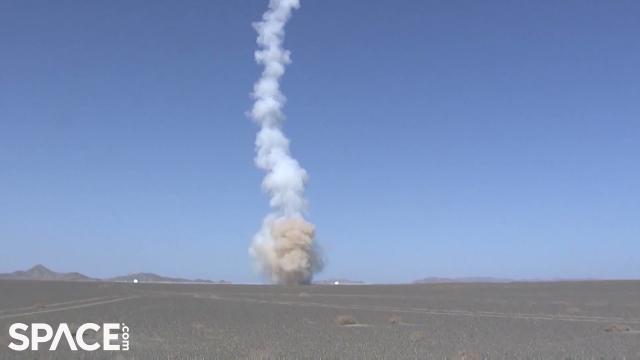
Sun blasts, Ingenuity flies, China launches and more in VFS Weekly highlights
Added 230 Views / 0 LikesThe Sun had an active with with a pair of sunspots blasting flares. NASA's Mars helicopter Ingenuity took a short flight, China launched a pair of rocket and SpaceX's Crew-3 Falcon 9 rocket goes vertical on the launch pad.
-
01:11
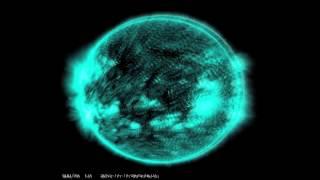
Sun Crackling With X and M Class Flares | Video
Added 646 Views / 0 LikesSunspot AR1890 has erupted with another X class flare on November 10th, 2013. Also, a Sunspot that just recently begun its Earth-facing journey (AR1895) has made its presence know with an M2 flare on Nov. 11th.
-
01:10
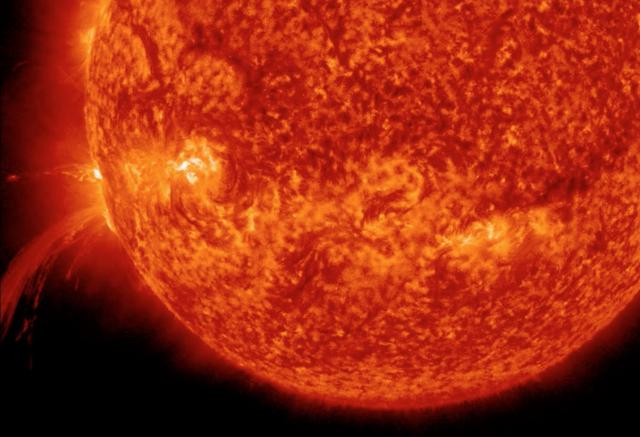
Sun Erupts With Gigantic Plume Of Fire | Video
Added 613 Views / 0 LikesSun Erupts With Gigantic Plume Of Fire | Video
-
01:13
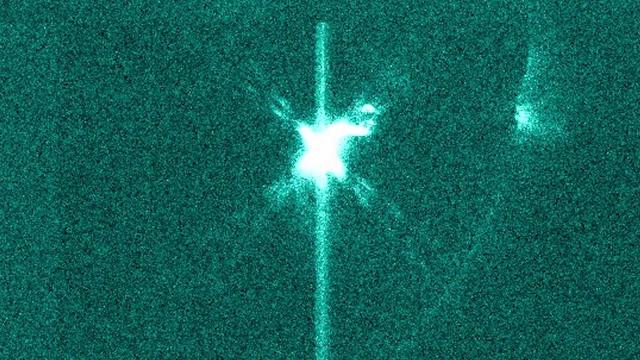
Sun Erupts With Monster X9 and X2 Flares
Added 565 Views / 0 LikesSun Erupts With Monster X9 and X2 Flares
-
01:10
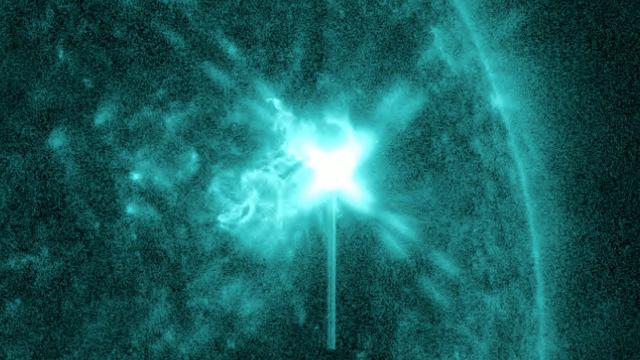
Sun erupts with powerful X1 and M8.7 flares! Spacecraft sees 'fireworks'
Added 246 Views / 0 LikesNASA's Solar Dynamics Observatory captured imagery of the Sun erupting with an M8.7 and X1-class solar flare on Oct. 2, 2022. The X-flare "produced a shortwave radio blackout over the Pacific Ocean and parts of North America," according to Spaceweather.co
-
01:06
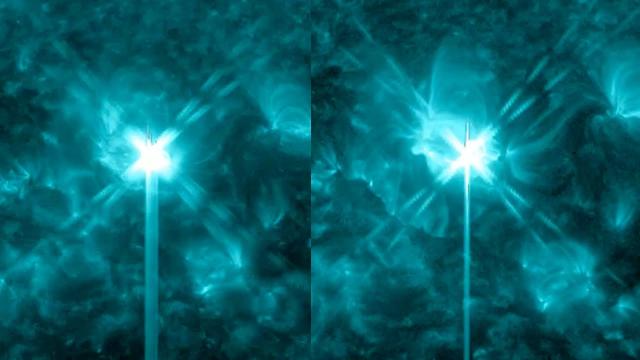
Sun erupts with powerful X1.6 and M4 solar flares, spacecraft sees it
Added 115 Views / 0 LikesSunpot AR3663 erupted with powerful X1.6 and M4 solar flares on May 3, 2024. NASA's Solar Dynamics Observatory captured the fireworks. Full Story: https://www.space.com/two-solar-flares-erupt-within-six-hours-may-2024-videoCredit: Credit: Space.com | foot
-
01:05
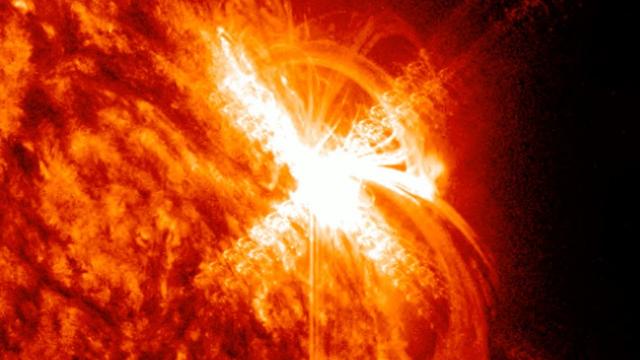
Sun erupts with powerful X2-class flare, NASA spacecraft sees it
Added 187 Views / 0 LikesSunspot AR3234 blasted an X2-class solar flare on March 3, 2023. NASA's Solar Dynamics Observatory captured the fireworks in multiple wavelengths.Credit: NASA/SDO/Helioviewer.org | edited by Space.com's Steve Spaleta (https://twitter.com/stevespaleta)Musi
-
01:23
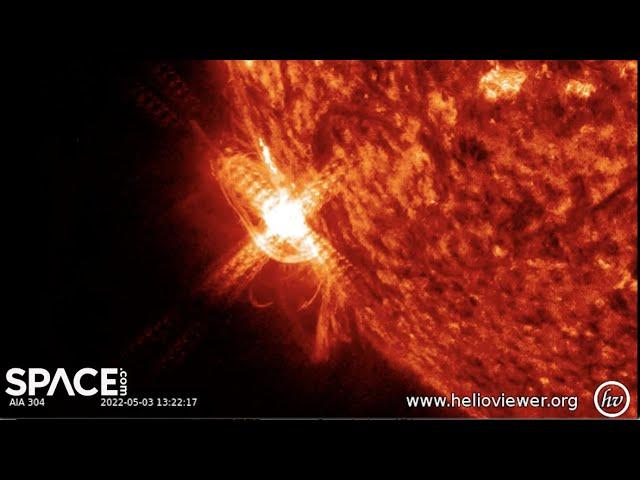
Sun erupts with stunning X1.1-class flare
Added 202 Views / 0 LikesAn emerging sunspot erupted with an X1.1-class solar flare on May 3, 2022. NASA Solar Dynamics Observatory captured the fireworks. Credit: Space.com | footage courtesy: NASA/SDO/ESA/helioviewer.org | edited by [Steve Spaleta](https://twitter.com/stevespal
-
01:18
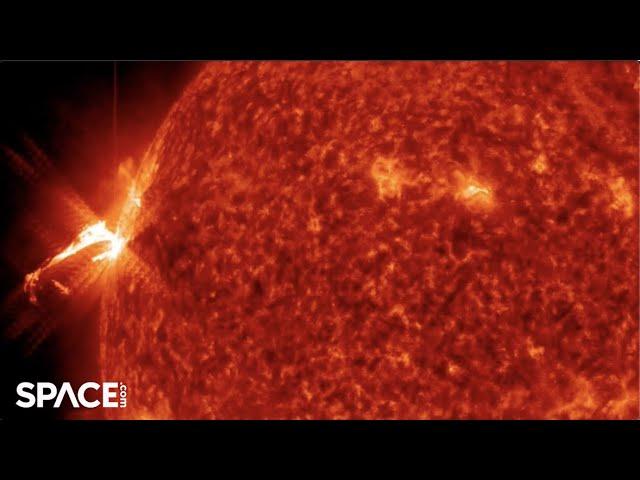
Sun erupts with X1 and M flares on Easter Sunday
Added 204 Views / 0 LikesEmerging sunspots AR2993 and AR2994 blasted M-class and X1 class flares on April 17, 2022. NASA’s Solar Dynamics Observatory captured footage of the eruptions in multiple wavelengths.Credit: Space.com / footage courtesy: NASA/SDO / produced & edited by St
